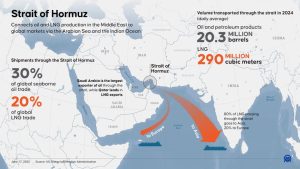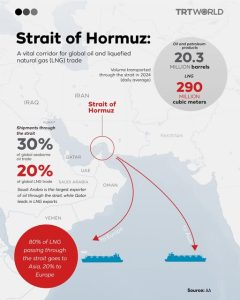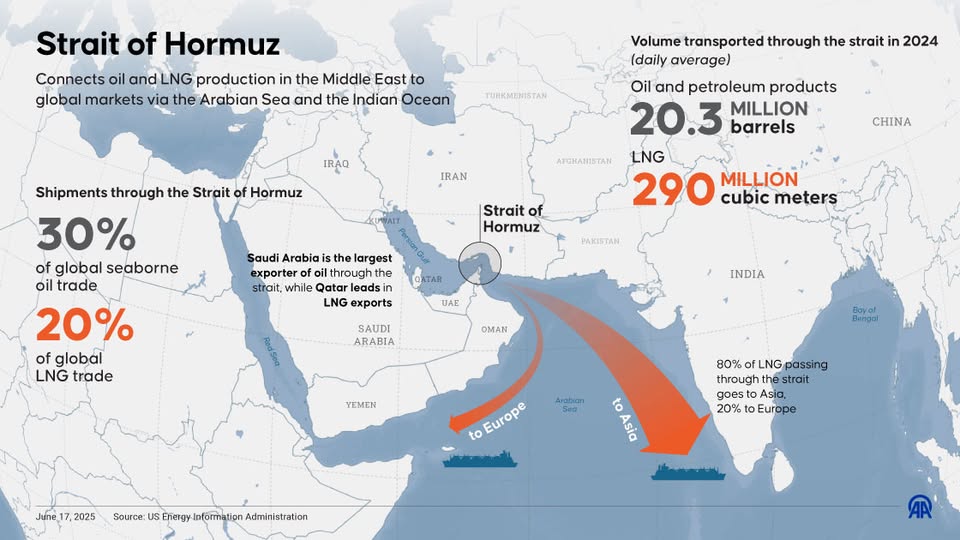Explore LNG carrier operations in the Persian Gulf through this expert guide covering best practices, safety protocols, real-world examples, and future outlook. Essential for maritime professionals, students, and enthusiasts.
Why LNG Carrier Operations in the Persian Gulf Matter
The Persian Gulf is home to some of the world’s most strategically important energy terminals, including those in Qatar, the United Arab Emirates, Kuwait, and Iran. As the global shift to cleaner fuels accelerates, liquefied natural gas (LNG) has emerged as a vital transitional energy source. According to the International Gas Union (IGU), LNG trade grew by 4.5% in 2023, and nearly 20% of global LNG exports transited through the Persian Gulf.
The operations of LNG carriers in this region are not only vital to the global energy supply chain but also inherently complex. Navigating congested waters, extreme temperatures, and geopolitical tensions requires specialized practices, training, and technology.
In this article, we examine best practices in LNG operations in the Persian Gulf, with insights into cargo handling, navigational safety, regulatory compliance, and emerging trends.

Navigating the Persian Gulf: Operational Environment and Hazards
The Persian Gulf, with an average depth of just 35 meters, is relatively shallow compared to other major shipping lanes. Its confined geography and heavy maritime traffic make it a challenging environment for LNG carrier operations. Key chokepoints such as the Strait of Hormuz—through which over 30% of global seaborne oil and significant LNG volumes pass—add to the strategic and operational complexity.
Furthermore, summer air temperatures regularly exceed 50°C (122°F), impacting machinery, crew endurance, and cargo systems. Shifting political landscapes and maritime security threats also demand heightened vigilance.
LNG carriers operating in this region must adhere to a combination of SOLAS, IGC Code, and flag-state-specific regulations, as well as terminal-specific operational guidelines.
LNG Cargo Handling: Best Practices at Persian Gulf Terminals
Pre-Arrival Checks and Coordination
Efficient LNG loading starts well before the vessel reaches the terminal. Masters and chief officers conduct pre-arrival meetings with terminal operators via Inmarsat or secure digital platforms. Items reviewed include:
- Shore-to-ship compatibility (LNG loading arms, manifold configuration)
- Weather and tidal forecasts
- Safety and communication protocols (using OCIMF/ISGOTT guidelines)
Mooring and Berthing
Given the massive size of LNG carriers—Q-Flex (210,000 m³) and Q-Max (266,000 m³)—dynamic positioning support, tug escort, and mooring line tension monitoring are critical. Terminals in Ras Laffan (Qatar) and Das Island (UAE) use automated mooring systems (Quick Release Hooks) to improve safety and turnaround.
Cargo Transfer Operations
The cargo transfer process adheres strictly to SIGTTO and IGC Code standards, including:
- Cooldown procedures for lines and manifolds to avoid thermal shock
- Use of closed-loop or open-loop loading systems, depending on boil-off gas (BOG) recovery capabilities
- Continuous monitoring via LNG Custody Transfer Measurement Systems (CTMS)
- Leak detection using infrared thermal cameras and gas detectors
Recent innovations from Wärtsilä and GTT have enhanced real-time monitoring and reduced BOG losses through integrated cargo handling systems.
Safety Protocols and Crew Preparedness
Safety aboard LNG carriers requires a multi-layered approach. All crew must undergo training as per the STCW Convention, Chapter V, with specialization in liquefied gas tanker operations.
Key safety measures include:
- Regular inerting of cargo tanks to prevent explosive atmospheres
- Use of double hulls and insulation barriers as per IGC Code
- Implementation of Emergency Shut-Down Systems (ESDS) and Fire and Gas Detection Systems (FGDS)
Drills simulating fire, cryogenic leakage, or collision are conducted every voyage cycle. Terminals like Ras Laffan coordinate joint emergency response exercises with LNG vessels to improve inter-agency cooperation.
Technologies Enhancing LNG Carrier Efficiency
Digital Twin Systems
Leading shipping companies like Nakilat and Maran Gas are deploying digital twin technology to simulate ship conditions, optimize voyage planning, and reduce risk. These systems integrate real-time data from cargo sensors, weather forecasts, and port availability.
Integrated Bridge Systems (IBS)
With high-traffic densities in the Persian Gulf, Integrated Bridge Systems (including radar, ECDIS, ARPA, AIS) help bridge teams maintain situational awareness and safe distances from other vessels and restricted zones.
LNG-Powered Escort Tugs
Some ports, like Fujairah and Ruwais, have adopted LNG-fueled tugs, which reduce emissions and comply with IMO Tier III standards.
Regulatory Framework and Compliance
LNG operations in the Persian Gulf are regulated by a combination of international, flag state, and port state authorities:
- IMO’s International Code for the Construction and Equipment of Ships Carrying Liquefied Gases in Bulk (IGC Code)
- SOLAS Chapters II-2 (Fire Protection) and V (Safety of Navigation)
- OCIMF’s Tanker Management Self Assessment (TMSA)
- Port State Control (PSC) regimes like Paris MoU and Tokyo MoU
- Terminal vetting by major LNG off-takers (e.g., Shell, TotalEnergies)
Non-compliance can result in detention, fines, and loss of charter.
Case Studies: Learning from Operations in Ras Laffan and Das Island
Ras Laffan Industrial City (Qatar)
As the world’s largest LNG export terminal, Ras Laffan handled over 77 million tonnes of LNG in 2023. Ships follow strict berthing schedules, and QatarEnergy mandates onboard Real-Time Risk Monitoring (RTRM) during operations. Incidents like weather delays and tug failures are addressed with predictive analytics systems.
Das Island Terminal (UAE)
Das Island supports ADNOC’s LNG exports, with a focus on integrating LNG bunkering capabilities for regional customers. The terminal’s drone inspection program for jetty maintenance has reduced downtime by 40%, offering a best-practice benchmark for Gulf ports.

Future Outlook: Decarbonization and Autonomous Operations
As part of the IMO’s 2050 decarbonization strategy, LNG carriers are increasingly adopting:
- Hybrid propulsion systems using battery-electric backup
- Air lubrication systems to reduce hull resistance
- Autonomous Navigation Trials using AI algorithms (piloted by companies like MOL and K Line)
Meanwhile, the European Union’s inclusion of shipping in the EU ETS (2024) and carbon intensity indicators (CII) will drive LNG carrier operators in the Gulf to adopt cleaner tech and optimize voyage planning.
Frequently Asked Questions (FAQ)
What is the IGC Code, and why is it important for LNG carriers?
The IGC Code is the IMO’s regulatory framework for ships carrying liquefied gases. It ensures design, construction, and operational safety.
How are LNG leaks prevented on board?
Leaks are prevented through inerting, real-time gas detection, and double containment systems.
What ports in the Persian Gulf are major LNG exporters?
Ras Laffan (Qatar), Das Island (UAE), Mina Al-Ahmadi (Kuwait), and Asaluyeh (Iran).
How do LNG carriers manage boil-off gas (BOG)?
BOG is either reliquefied using cryogenic systems or used as propulsion fuel.
Are LNG operations environmentally friendly?
While cleaner than oil, LNG still emits methane. Advances like BOG recovery and hybrid engines reduce its environmental impact.
What are the crew training requirements?
Crew must be STCW-certified with specialized training in gas carrier operations, firefighting, and emergency response.
Is the Strait of Hormuz safe for LNG transit?
Yes, though tensions require constant monitoring. Naval coalitions and AIS tracking improve safety.
Conclusion
LNG carrier operations in the Persian Gulf represent a high-stakes balance of precision, technology, and safety. With geopolitical sensitivity and global energy demand in play, adhering to best practices—from pre-arrival checks to cargo transfer and emissions control—is essential.
As digital systems evolve and decarbonization takes hold, the Persian Gulf will remain a vital, if complex, theater for LNG trade. Maritime professionals navigating these waters must combine compliance, vigilance, and innovation to operate safely and sustainably.
References
- International Maritime Organization. (2023). IGC Code Guidelines. https://www.imo.org
- International Gas Union (2024). World LNG Report. https://www.igu.org
- QatarEnergy Annual Reports. https://www.qatarenergy.qa
- OCIMF – Oil Companies International Marine Forum. https://www.ocimf.org
- Wärtsilä LNG Solutions. https://www.wartsila.com
- GTT Technologies. https://www.gtt.fr
- Inmarsat Maritime. https://www.inmarsat.com
- MarineTraffic. Ras Laffan and Das Island stats. https://www.marinetraffic.com
- IMO Greenhouse Gas Strategy (2023). https://www.imo.org/en/OurWork/Environment
- UNCTAD Review of Maritime Transport (2024). https://unctad.org

